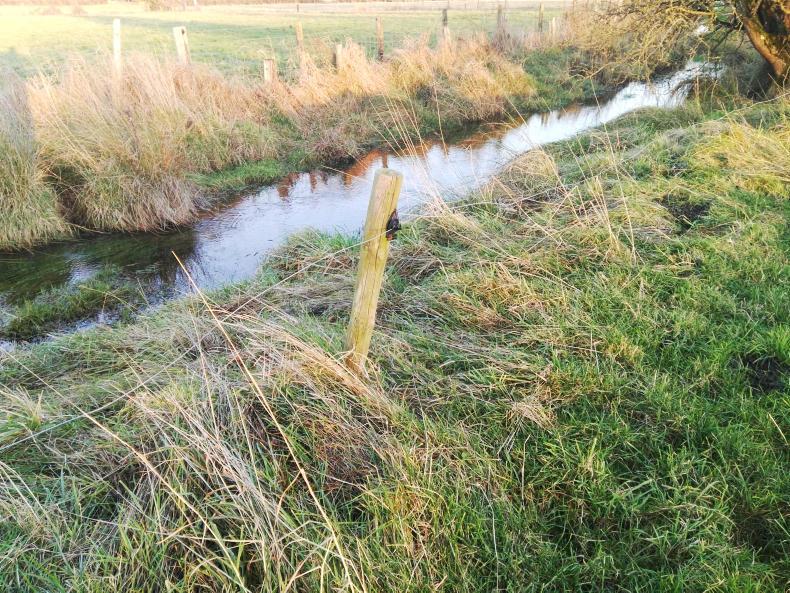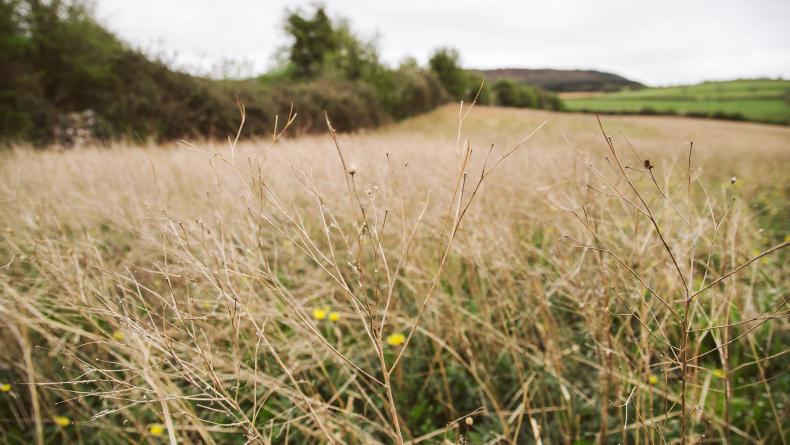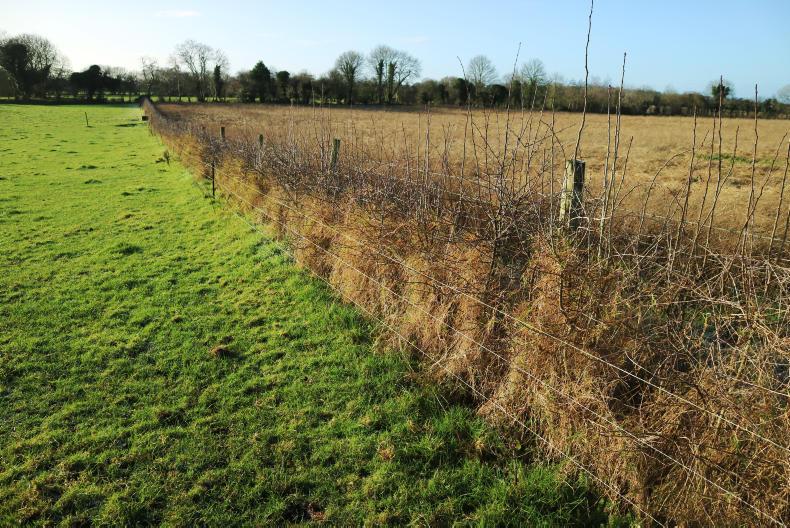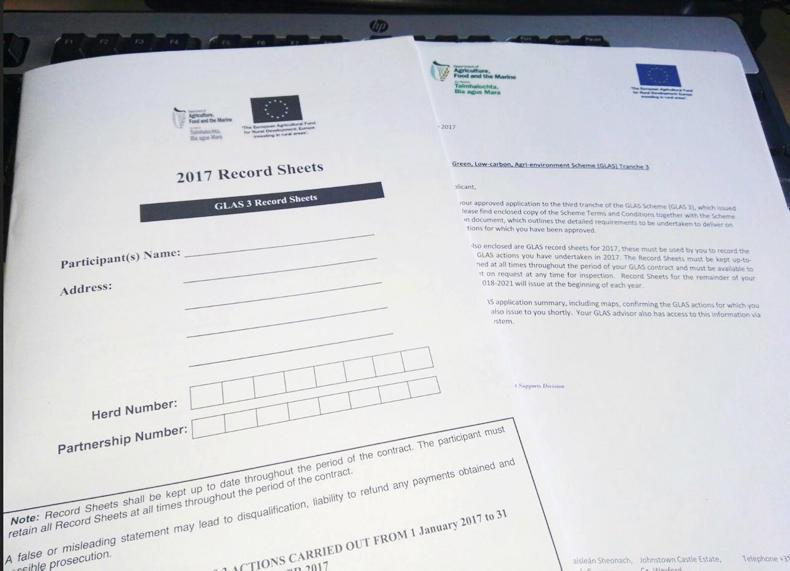At the end of December 2018, there were 49,100 active Green, Low-Carbon, Agri-Environment Scheme (GLAS) participants. All of these participants have different actions to carry out annually to qualify for payment.
The majority of farmers participating in the scheme are in the first tranche of GLAS, which opened for applications in 2015. The subsequent tranches opened towards the end of 2015 and 2016, respectively.
A lot of the actions that needed to be carried out had to be done within the first year of entry
The scheme lasts for five years and farmers can receive up to €5,000 depending on the actions they committed to do in their original application.
A lot of the actions that needed to be carried out had to be done within the first year of entry.
This does not mean that you can simply forget about the scheme after carrying out the original work because a lot of these actions need to be maintained while others need to be renewed annually.
Actions such as arable grass margins, planting of hedgerows, installation of bird and bat boxes all had to be completed by a certain date for example. But their upkeep is also part of the terms and conditions of participation.
Here are a few examples of things to look out for when you are reviewing your GLAS requirements.
When you received approval for the scheme, you should have been sent out a list of the chosen actions with corresponding maps to illustrate where these actions are located on the farm. You should have also received a booklet outlining the specifications of each action. The specifications are available on the Department’s website.
To ensure you are keeping up to date with the actions and not in line for a penalty after an inspection, read through the specifications and double-check that all is in order. Here are a few examples of common actions farmers have chosen that will require maintenance.
Participants who chose this action had the option of sowing a 3m, 4m or 6m grass margin along the full length of a LPIS parcel or field boundary. The grass seed mix had to contain at least 60% cocksfoot or timothy and also had the option of including a wildflower in the mix.
The main point to note here is that the margin must stay in the same location for the duration of the contract.
Points to note:
Soil cultivation cannot be carried out within the margin once established.The margin must be mulched, mown or grazed at least once per year, but not between 1 March and 15 August annually. Off-takes can be removed.Fertiliser or lime cannot be applied to the margin.Pesticides cannot be applied to the margin except for the spot treatment of noxious and/or invasive weeds.Protection of watercourses
from bovines
This was a popular action among participants who had streams and rivers on their holdings.
The requirement was to fence off all watercourses that were identified on the GLAS online system a minimum of 1.5m from the top of the bank of the watercourse.

Protection of watercourses from bovines.
The fencing had to be bovine-proof and fit for purpose. A single strand of mains electric fencing is ideal for this action. Again, this action should be all complete and now it is a matter of walking the fence fairly regularly to make sure it is not damaged. If there are issues, you should make the effort to rectify them.
Points to note:
Livestock drinking points are not permitted.An alternative water supply must be provided for livestock.The fencing must be stock-proof, fit for purpose and be undertaken with permanent stakes and wire.Wild bird cover
This was another popular option among participants and the action has the highest annual payment of €900/ha. As you should be aware, this action needs to be renewed annually.
There are two sowing options; the one-year mix or the two-year mix.

Wild bird cover.
The one-year mix must contain a cereal (oats, barley, wheat or triticale) and at least one species from the following: oilseed rape, linseed or mustard.
The two-year mix must contain a cereal (oats, barley, wheat or triticale) and kale.
Where the two-year mix is sown, half the plot is sown with cereal and half the plot is sown with kale.
Do not sow it in alternate strips, as the cereal must be resown every year while the kale will be resown in years three and five.
At this time of the year, the main point to note is that the parcel must be fully fenced from livestock from the time of sowing until 15 March.
So, from 15 March, until the crop is resown you are allowed to let livestock enter the parcel to help breakdown trash and graze off any grass present.
The deadline for resowing the crop is 31 May.
Participants in the first tranche of GLAS had the opportunity to take planting a new hedgerow action.
The hedgerow should be in place since the end of March 2017.

Hedgerow.
If you took this action, you should make sure the hedge is fully fenced from livestock.
This rule does not fully apply if the hedgerow bounds a private laneway, public road or watercourse – in this case, it only has to be fenced on one side (opposite the laneway/road/watercourse).
Failed or dead plants must be replaced at the earliest possible planting opportunity.

Record sheetsDo not forget that record sheets also need to be maintained annually to document any maintenance or update you carried out on each GLAS action. Record sheets are usually posted out annually but they are also available online. Inspectors will ask for record sheets during an inspection that is why it is vital to keep them updated and safely stored.
At the end of December 2018, there were 49,100 active Green, Low-Carbon, Agri-Environment Scheme (GLAS) participants. All of these participants have different actions to carry out annually to qualify for payment.
The majority of farmers participating in the scheme are in the first tranche of GLAS, which opened for applications in 2015. The subsequent tranches opened towards the end of 2015 and 2016, respectively.
A lot of the actions that needed to be carried out had to be done within the first year of entry
The scheme lasts for five years and farmers can receive up to €5,000 depending on the actions they committed to do in their original application.
A lot of the actions that needed to be carried out had to be done within the first year of entry.
This does not mean that you can simply forget about the scheme after carrying out the original work because a lot of these actions need to be maintained while others need to be renewed annually.
Actions such as arable grass margins, planting of hedgerows, installation of bird and bat boxes all had to be completed by a certain date for example. But their upkeep is also part of the terms and conditions of participation.
Here are a few examples of things to look out for when you are reviewing your GLAS requirements.
When you received approval for the scheme, you should have been sent out a list of the chosen actions with corresponding maps to illustrate where these actions are located on the farm. You should have also received a booklet outlining the specifications of each action. The specifications are available on the Department’s website.
To ensure you are keeping up to date with the actions and not in line for a penalty after an inspection, read through the specifications and double-check that all is in order. Here are a few examples of common actions farmers have chosen that will require maintenance.
Participants who chose this action had the option of sowing a 3m, 4m or 6m grass margin along the full length of a LPIS parcel or field boundary. The grass seed mix had to contain at least 60% cocksfoot or timothy and also had the option of including a wildflower in the mix.
The main point to note here is that the margin must stay in the same location for the duration of the contract.
Points to note:
Soil cultivation cannot be carried out within the margin once established.The margin must be mulched, mown or grazed at least once per year, but not between 1 March and 15 August annually. Off-takes can be removed.Fertiliser or lime cannot be applied to the margin.Pesticides cannot be applied to the margin except for the spot treatment of noxious and/or invasive weeds.Protection of watercourses
from bovines
This was a popular action among participants who had streams and rivers on their holdings.
The requirement was to fence off all watercourses that were identified on the GLAS online system a minimum of 1.5m from the top of the bank of the watercourse.

Protection of watercourses from bovines.
The fencing had to be bovine-proof and fit for purpose. A single strand of mains electric fencing is ideal for this action. Again, this action should be all complete and now it is a matter of walking the fence fairly regularly to make sure it is not damaged. If there are issues, you should make the effort to rectify them.
Points to note:
Livestock drinking points are not permitted.An alternative water supply must be provided for livestock.The fencing must be stock-proof, fit for purpose and be undertaken with permanent stakes and wire.Wild bird cover
This was another popular option among participants and the action has the highest annual payment of €900/ha. As you should be aware, this action needs to be renewed annually.
There are two sowing options; the one-year mix or the two-year mix.

Wild bird cover.
The one-year mix must contain a cereal (oats, barley, wheat or triticale) and at least one species from the following: oilseed rape, linseed or mustard.
The two-year mix must contain a cereal (oats, barley, wheat or triticale) and kale.
Where the two-year mix is sown, half the plot is sown with cereal and half the plot is sown with kale.
Do not sow it in alternate strips, as the cereal must be resown every year while the kale will be resown in years three and five.
At this time of the year, the main point to note is that the parcel must be fully fenced from livestock from the time of sowing until 15 March.
So, from 15 March, until the crop is resown you are allowed to let livestock enter the parcel to help breakdown trash and graze off any grass present.
The deadline for resowing the crop is 31 May.
Participants in the first tranche of GLAS had the opportunity to take planting a new hedgerow action.
The hedgerow should be in place since the end of March 2017.

Hedgerow.
If you took this action, you should make sure the hedge is fully fenced from livestock.
This rule does not fully apply if the hedgerow bounds a private laneway, public road or watercourse – in this case, it only has to be fenced on one side (opposite the laneway/road/watercourse).
Failed or dead plants must be replaced at the earliest possible planting opportunity.

Record sheetsDo not forget that record sheets also need to be maintained annually to document any maintenance or update you carried out on each GLAS action. Record sheets are usually posted out annually but they are also available online. Inspectors will ask for record sheets during an inspection that is why it is vital to keep them updated and safely stored.










 This is a subscriber-only article
This is a subscriber-only article










SHARING OPTIONS: